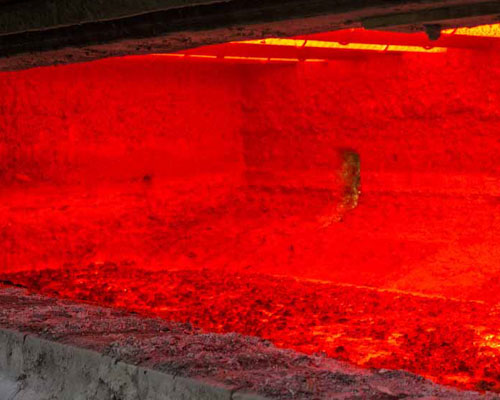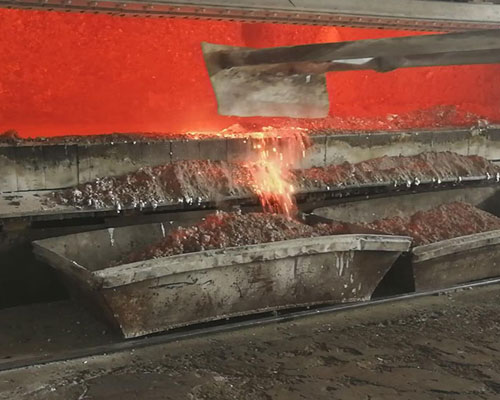The quality of aluminum melt determines the quality of final products to a great extent. In particular, there are hydrogen content, more inclusions, and less active crystal nucleus in electrolytic aluminum liquid. If the process is not proper, there will be many quality problems such as more pores, more slag inclusions, coarse grains and so on. It is of great significance to improve the quality of aluminum melt by using advanced aluminum melt treatment technology.
Aluminum melt treatment includes grain refinement, degassing and filtration.
There are two ways to refine grain, one is adding Al Ti master alloy in furnace and the other is adding Al Ti B wire outside furnace. The addition of Al Ti master alloy in the furnace not only has a large amount of master alloy, but also the effect of grain refinement decays with the prolongation of melt residence time in the furnace, and even loses the grain refining effect.
On line treatment outside the furnace can not only overcome the above shortcomings, but also reduce the amount of master alloy by more than half, and the grain size is fine and uniform. Refining degassing can be divided into furnace treatment and external treatment. The on-line treatment technology outside the furnace can not only reduce or avoid the secondary pollution of the melt, but also improve the product quality and reduce the labor intensity of the workers.

Filtration is the most effective and reliable means to remove the non-metallic inclusions in aluminum alloy melt. There are mesh filtration, foam ceramic filter filtration and microporous ceramic tube filtration. At present, foam ceramic board filtration is widely used.
At present, aluminum melt treatment technology has developed from single degassing or filtration to continuous treatment technology combining degassing and filtration. In the same treatment unit, both degassing and filtering functions are available, and the two functions are carried out continuously at the same time. In order to improve the quality of aluminum materials, high-quality aluminum materials are often treated in the furnace and outside the furnace.

